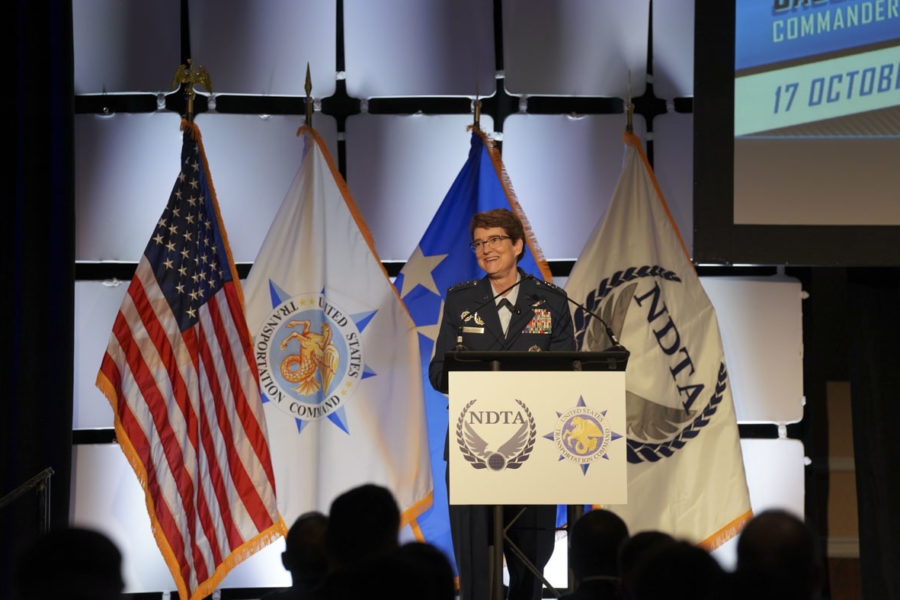The United States can longer assume its logistics are safe from harm and must develop a more agile approach to contend with China’s growing ability to disrupt American and allied shipping and airlift, the head of U.S. Transportation Command Gen. Jacqueline D. Van Ovost said Oct. 17.
“None of us want logistics to cause failure on the battlefield,” Van Ovost said. “We cannot do things the same way.”
Van Ovost presented the new plan for TRANSCOM in a speech to the National Defense Transportation Association in St. Louis. It reflects the new approach for dealing with future adversaries that will be soon be rolled out in the Pentagon’s new National Defense Strategy.
“The ability to generate and sustain operational momentum in compressed timelines, to more destinations, with a limited capacity will be an imperative,” Van Ovost said.
Van Ovost said the vastness of the Pacific and China’s long-range strike capabilities has prompted the new approach. In the 1991 Gulf War, the U.S. built up its forces for months before driving Iraqi troops out of Kuwait at a time of its choosing. In the wars in Iraq and Afghanistan in the 2000s, TRANSCOM could airlift massive amounts of troops and materiel without any interference.
In the new age of conflict, the enemy will get a vote on when and where U.S. forces operate, possibly risking their ability even to leave the homeland, Van Ovost said.
“Over 85 percent of the joint force is stationed in the United States, and our competitors are on a trajectory that will present persistent threats across multiple domains including throughout North America,” the TRANSCOM strategy reads. “If these threats are left unresolved, our power projection capability will be put at risk and will force us to “fight to get to the fight.’”
TRANSCOM has already been forced to adjust to rapidly changing events. During the U.S. withdrawal of Afghanistan in late summer of 2021, Air Mobility Command, part of TRANSCOM, evacuated over 100,000 people from the country with little notice and planning as part of Operation Allies Refuge. Since the renewed Russian invasion of Ukraine, TRANSCOM has delivered billions of dollars in U.S. military assistance to Europe, as well as U.S. forces, including the Army’s 82nd Airborne Division.
Those operations, while successful, exposed weaknesses in handling data that slowed the effort, according to Van Ovost.
“Change is hard,” she said.
TRANSCOM’s efforts in Europe and Afghanistan pale in comparison to the effort that might be required to support a U.S. military operation in the Pacific, such as a defense of Taiwan. In the future, and especially in the Pacific, TRANSCOM will need to anticipate threats before they arise.
Van Ovost wants to use commercial planes and ships more to fill gaps in the U.S. military’s fleet. In Europe, two-thirds of TRANSCOM’s airlifts of aid to Ukraine have been operated by contracted airlines, not military aircraft and crews. Part of TRANSCOM’s new strategy entails building the capability to operate more nimbly by employing commercial assets, drawing on increased overflight access, and using a wider array of seaports, railways, and airfields.
“We must expand and strengthen our global transportation networks to facilitate our ability to aggregate force packages to fight and then disaggregate to survive during brief periods of domain superiority,” states TRANSCOM’s strategy.
“We must adopt the mentality that challenge is not synonymous with impossible and contested is not the same as impenetrable,” Van Ovost said.
